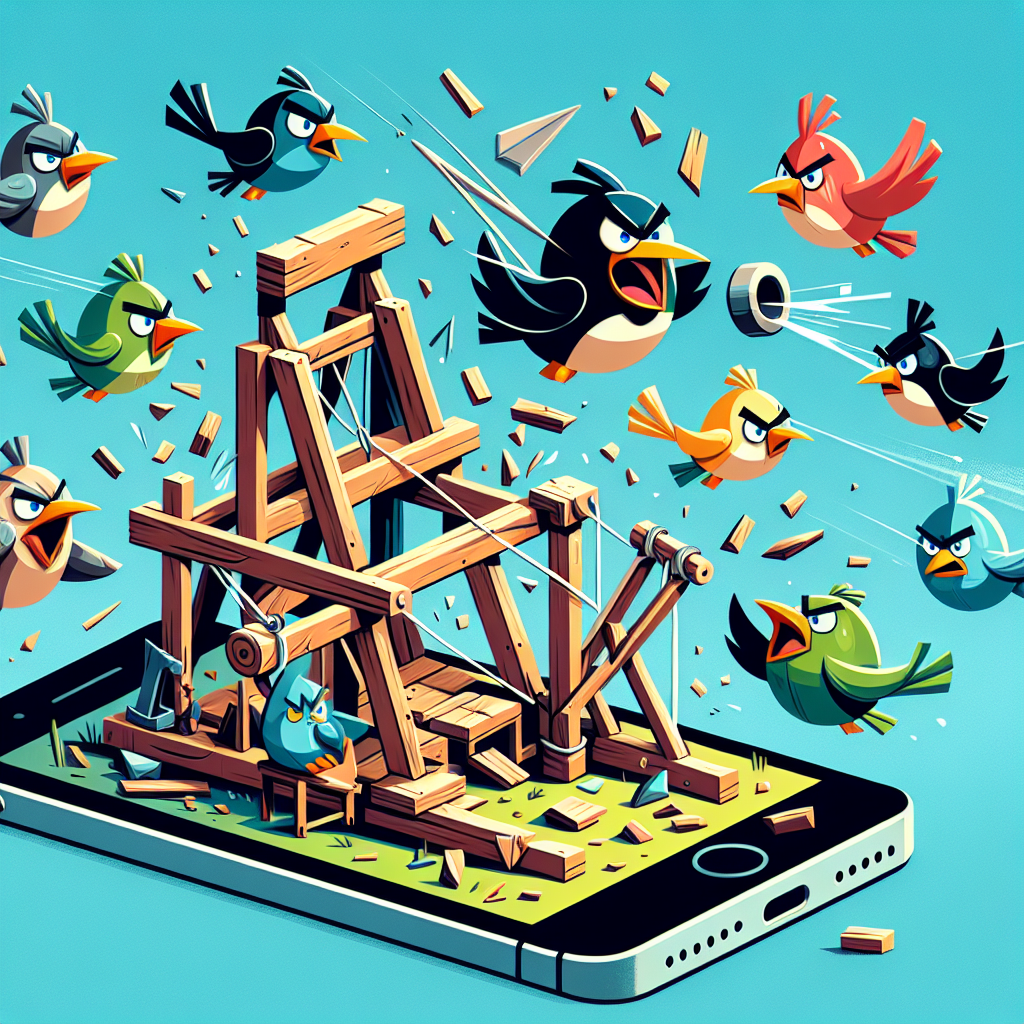How Angry Birds Revolutionized Mobile Gaming
The Birth of Angry Birds
In December 2009, a Finnish game developer named Rovio Entertainment launched a mobile game that would forever change the landscape of mobile gaming: Angry Birds. Initially available for iOS devices, Angry Birds quickly gained traction and was later adapted for Android, Windows Phone, and other platforms. The game’s success was seemingly overnight, yet rooted in strategic development decisions and robust gameplay. Designed with an engaging, physics-based mechanic, Angry Birds provided a unique gaming experience by allowing players to fling birds with distinct abilities at structures housing sinister green pigs.
Innovative Game Design
Core to Angry Birds’ revolutionary impact was its innovative design, marked by simplicity yet deep engagement. The game featured intuitive touch-screen controls, making it accessible across demographics. The use of bright, cartoonish graphics and humorous animations contributed to its widespread appeal. Each level was meticulously crafted to require strategic thinking and skill, thus ensuring players remained engrossed.
The design leveraged a physics engine that added realism to the gameplay. Each bird possessed special powers—some could explode, others could multiply or boomerang, each unlocking new strategies. Landing a perfect shot was immensely satisfying, providing positive reinforcement that kept users coming back.
Accessibility and Free-to-Play Model
Before Angry Birds, mobile gaming was limited in accessibility, often tied to high costs or inconvenient distribution methods. Angry Birds adopted a freemium model, offering the game free of charge with optional in-app purchases. This approach allowed broad access, drawing in casual gamers who were previously reluctant to spend money on mobile games. The paradigm shift towards free-to-play gaming influenced countless future titles, liberating mobile gaming from former constraints and paving the way for today’s expansive mobile market.
A Cultural Phenomenon
Angry Birds transcended gaming to become a cultural phenomenon. It made appearances on TV shows, inspired merchandise ranging from plush toys to apparel, and even led to an animated series and feature films. The game’s characters became icons, recognizable across the globe. Its influence extended into educational tools, promoting STEM education by teaching principles of physics and mathematics through the game’s mechanics.
The widespread appeal of Angry Birds was amplified by social media. Platforms such as Facebook and Twitter were crucial in spreading the game’s popularity, as they allowed players to share achievements and recommendations with friends, effectively providing free marketing for the game.
Impact on App Store Economics
Angry Birds influenced app store dynamics significantly. It highlighted the potential profitability of mobile games, enticing developers to create new, innovative titles. The game’s wild success prompted platform holders like Apple and Google to refine their app stores, prioritizing discoverability for apps and ensuring that quality content reached users efficiently.
Angry Birds also disrupted traditional advertising methods with its approach. Rovio pioneered advertising within mobile games, incorporating unobtrusive ads and partnerships that allowed brands to reach a massive audience. This monetization strategy became a template for future games, offering developers diverse revenue streams beyond direct sales.
The Rise of Casual Gaming
Angry Birds played a pivotal role in legitimizing mobile phones as gaming platforms, dismissing the notion that games needed to be graphically complex or high-budget to succeed. It propelled the casual gaming industry into mainstream culture and sparked the rise of countless casual titles. The game proved that simplicity and engagement could attract a large and diverse player base, from children to adults.
As smartphones became more commonplace worldwide, Angry Birds’ success demonstrated a scalable model that could cater to different markets. The game’s massive adoption highlighted the shift in user preferences towards more casual, on-the-go gaming experiences, contrasting sharply with the then-dominant console and PC gaming markets.
Angry Birds and User Engagement
The addictive nature of Angry Birds was no accident. Rovio invested in psychological engagement tactics, employing elements such as level progression and rewards to maintain player interest. Players were motivated to return through daily challenges and unlockables, fostering a habit-forming pattern. This engagement model set new standards for user retention in mobile games.
Moreover, the introduction of regular updates kept the player base engaged with fresh content. Rovio capitalized on holidays and special occasions, releasing themed updates that kept Angry Birds relevant in a rapidly evolving market. These strategies not only extended the game’s lifecycle but also fostered a community around it, ensuring its sustained presence in conversation among gamers.
Expansion and Legacy
Faced with monumental success, Rovio expanded the Angry Birds universe, developing sequels like Angry Birds Seasons, Angry Birds Space, and Angry Birds Star Wars. These spin-offs introduced new gameplay mechanics and themes, demonstrating the brand’s versatility. Each new title enriched the brand while maintaining the original’s charm, solidifying Angry Birds’ legacy in gaming history.
The evolution of Angry Birds illustrates its enduring impact on mobile gaming. Its success challenged and inspired developers globally to explore new mechanics, themes, and narratives, broadening the industry’s horizons.
Conclusion
The phenomenon of Angry Birds transcended its role as a mere game, influencing mobile gaming’s evolution in numerous ways. By demystifying mobile gaming for the masses and legitimizing smartphones as viable gaming platforms, it forged a path for future innovations. Even today, Angry Birds remains a textbook case in mobile game development, embodying rich user engagement, strategic monetization, and global cultural impact. As developers continue to chase similar success, Angry Birds’ legacy endures, reminding us of its pivotal role in defining modern mobile gaming.












Post Comment